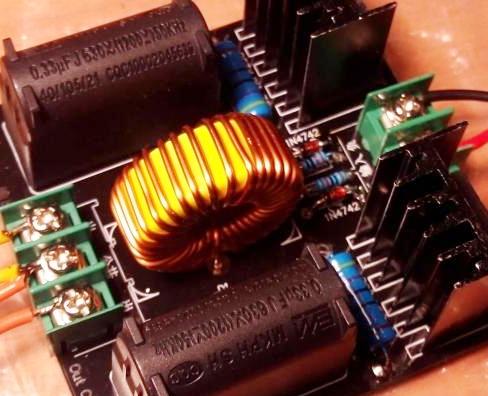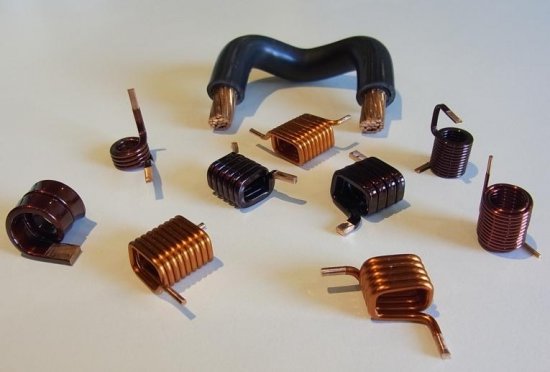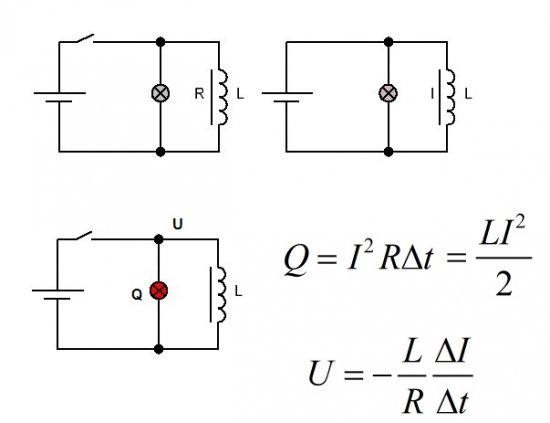Inductive energy
The energy of the inductor (W) is the energy of the magnetic field generated by the electric current I flowing through the wire of this coil. The main characteristic of the coil is its inductance L, that is, the ability to create a magnetic field when an electric current passes through its conductor. Each coil has its own inductance and shape, therefore the magnetic field for each coil will differ in magnitude and direction, even though the current may be exactly the same.
Depending on the geometry of a certain coil, on the magnetic properties of the medium inside and around it, the magnetic field created by the transmitted current at each considered point will have a certain induction B, as well as the magnitude of the magnetic flux Ф - will also be determined for each of the considered areas S.

If we try to explain it quite simply, then the induction shows the intensity of the magnetic action (related with the power of the ampere), which is capable of exerting a given magnetic field on a current-carrying conductor placed in that field, and the magnetic flux means how the magnetic induction is distributed over the surface under consideration.Thus, the energy of the magnetic field of the coil with the current is localized not directly in the turns of the coil, but in the volume of space in which the magnetic field exists, which is associated with the coil current.
The fact that the magnetic field of the current coil has real energy can be discovered experimentally. Let's put together a circuit in which we connect an incandescent lamp in parallel with an iron-core coil. Let's apply a constant voltage from a power source to the bulb coil. A current will immediately be established in the load circuit, it will flow through the bulb and through the coil. The current through the bulb will be inversely proportional to the resistance of its filament, and the current through the coil will be inversely proportional to the resistance of the wire with which it is wound.
If you now suddenly open the switch between the power source and the load circuit, the bulb will switch briefly, but quite noticeably. This means that when we turned off the power source, the current from the coil rushed into the lamp, which means that in the coil there was this current, it had a magnetic field around it, and at the moment when the magnetic field disappeared, an EMF appeared in the coil.
This induced EMF is called self-induced EMF because it is directed by the coil's own magnetic field with a current on the coil itself. The thermal effect Q of the current in this case can be expressed by the product of the values of the current that was installed in the coil at the moment of opening the switch, the resistance R of the circuit (coil and wires of the lamp ) and the duration of the current disappearance time t.The voltage developed across the resistance of the circuit can be expressed in terms of the inductance L, the impedance of the circuit R and also taking into account the time of disappearance of the current dt.
Let us now apply the expression for the coil energy W to a particular case—a solenoid with a core having a certain magnetic permeability that is different from the magnetic permeability of the vacuum.
To begin with, we express the magnetic flux F through the cross-sectional area S of the solenoid, the number of turns N and the magnetic induction B along its entire length l. Let us first record the inductance B through the loop current I, the number of loops per unit length n, and the magnetic permeability of the vacuum.
Let's then substitute here the volume of the solenoid V. We've found the formula for the magnetic energy W, and we're allowed to take from that the value w—the volume density of the magnetic energy inside the solenoid.
James Clerk Maxwell once showed that the expression for the volume density of magnetic energy is true not just for solenoids, but also for magnetic fields in general.



